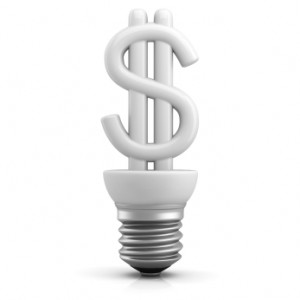As we pray for Japan – and their food and their water – nuclear power’s renaissance is halted in its tracks. Can the world continue to believe nuclear is cleaner than coal and more reliable than renewables?
Seven in 10 Americans have become more concerned since the earthquake about a nuclear disaster occurring in the United States, according to a Gallup poll taken four days after the catastrophe. Thirty-nine percent are now “a lot” more concerned.
It was just a year ago that support for nuclear power reached new high, with 62 percent of Americans surveyed favoring the use of nuclear energy for electricity. Last week, amid the specter of “meltdown” at Fukushima Daiichi, a mere 44 percent favored the construction of nuclear power plants in the US.
Quick caveat: this is a clean-tech communications blog, and for the purposes of this post, we’re going to remain neutral on whether nuclear is a clean technology or a blight on the planet. The label doesn’t matter. Maybe it’s both.
What is certain is that electricity demand is high. As you can see, per capita electricity use has tripled since 1960.

I don’t know anyone who loves nuclear power. Accidents are potentially cataclysmic, nuclear waste is a big issue, and now we’re hearing about tainted water in Tokyo. But I do know folks who are attached to their TVs, microwaves, stoves, refrigerators, battery chargers, toasters, and that creature comfort we call electric light. Mobile phones and computers are necessary evils, and the Internet, where we see some of the shrillest anti-nuke rants, generally works best when plugged in.
So let’s admit nuclear power is here for a reason that we consumers have created. Now let’s ask ourselves, do we really want to kill nuclear? And to what extent are we scapegoating nuclear out of sympathy for Japan’s suffering, in reaction to the wall-to-wall coverage, and in light of the potential for a nightmare?
More importantly, how many of us have the tools, time and analytical power to evaluate the risk objectively? What should be the yardstick?
Looking at the risk
The smartest comment I’ve heard on this subject comes from James Acton, a physicist with the Carnegie Endowment’s nuclear policy program: “[Y]ou’ve got to realize that all forms of energy generation carry risk,” he said on CNN last week. “Nuclear carries risk as we have dramatically seen in the last couple of days. But fossil fuels also carry risk: The risk of catastrophic climate change. Renewables, which I absolutely support a lot of research and development and funding for, right now carry the risk of not being able to produce enough energy.”
 Acton expounds on his comments in this even-handed opinion piece on the Foreign Policy website. Despite increasingly robust plant designs, he says the nuclear industry needs to reassess to earn the public’s trust.
Acton expounds on his comments in this even-handed opinion piece on the Foreign Policy website. Despite increasingly robust plant designs, he says the nuclear industry needs to reassess to earn the public’s trust.
“Even after the ongoing disaster in Japan, the nuclear industry is unlikely to welcome such an exercise,” he writes. “It is almost certain to argue that a whole-scale reassessment is unnecessary because existing standards are adequate. But after two earthquakes in less than four years shook Japanese reactors beyond their design limits, this argument is simply not credible. It is also self-defeating.”
The unfolding story in Japan notwithstanding, nuclear is relatively safe if history and the Next Big Future website are to be believed. Nuclear power generation kills 0.004 persons per terawatt-hour (TWh) compared with 161 for coal, according to the site’s quasi-viral March 13 post. Citing a variety of sources, it goes on to say rooftop solar (!) is 11 times more dangerous than nuclear (again, measured by the death per TWh) because roofing is one of the top 10 most dangerous occupations. Here’s Seth Godin’s chart on the Next Big Future data.

The flyspeck on the far left is nuclear. Slate offers similarly lopsided figures, saying “you’d need 500 Chernobyls” to match a year’s worth of premature deaths caused by fossil fuel-related air pollution. (But visit Huffington Post and read that Chernobyl’s horror has been vastly underplayed.)
Could it be that nuclear power is being scapegoated because of the recency of Japan’s troubles but simultaneously embraced because, well, Chernobyl is so last century? Is there something about death by nuclear that’s more fearsome than slow death by coal-related air pollution?
I don’t know. I do know I don’t want to shill for the nuclear industry. I’d prefer not to have a plant down the road in Seabrook, N.H., looking for all the world like it’s floating in the estuary. I can certainly relate to James Carroll’s poignant observation in Monday’s Boston Globe: “More than 500 nuclear power plants are in operation or under construction around the world today, with every one of them being viewed with new skepticism,” he writes. “What have we done to ourselves?”
But what if the sheer complexity of nuclear ends up quashing a worthy component of our energy mix? I guess I come down on the side of CNN’s Fareed Zakaria: Don’t rush to judgment. At least not before we unplug.
 That was a colleague’s snarky rejoinder to my explanation of the oil export crisis and the implications for our energy future. Perhaps my explanation was off. Or perhaps we’re all suffering from a Hollywood-induced relevance deficit. Human response systems are really good at spotting and dealing with near-term problems. If it’s not a clear and present danger, it’s not relevant and therefore not motivating. Hollywood understands this and formulates its films to capitalize on it – particularly the action and disaster ones.
That was a colleague’s snarky rejoinder to my explanation of the oil export crisis and the implications for our energy future. Perhaps my explanation was off. Or perhaps we’re all suffering from a Hollywood-induced relevance deficit. Human response systems are really good at spotting and dealing with near-term problems. If it’s not a clear and present danger, it’s not relevant and therefore not motivating. Hollywood understands this and formulates its films to capitalize on it – particularly the action and disaster ones.




 Acton expounds on his comments in this even-handed
Acton expounds on his comments in this even-handed 
